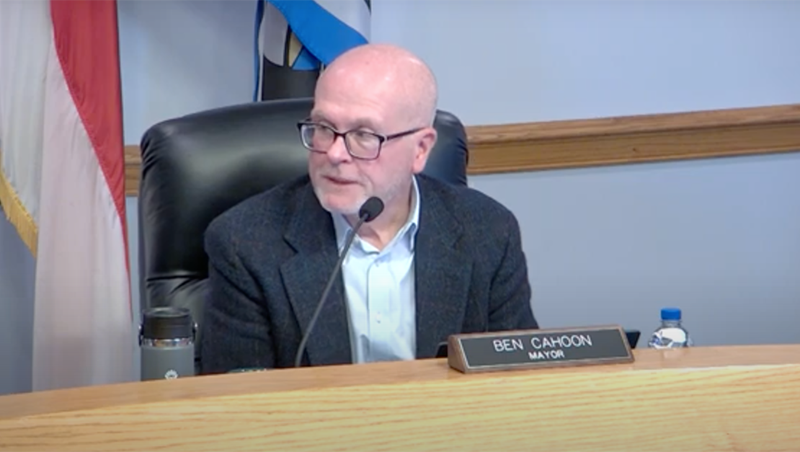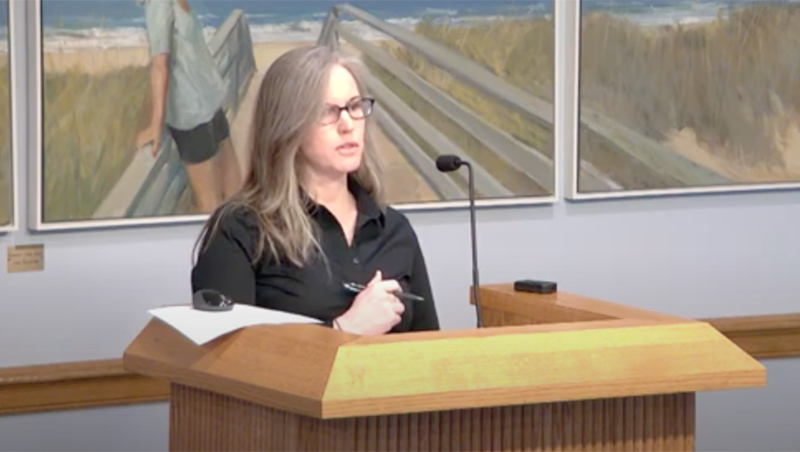Historic Character Commercial zone established in Nags Head
Published 11:54 am Sunday, March 19, 2023
|
Getting your Trinity Audio player ready...
|
After a six month process, Nags Head commissioners passed zoning amendments in the Historic Character area, between Hollowell Avenue and Danube Street, between NC-12 and Hwy 158, at their March 15 meeting.
After over an hour of public input, planning director Kelly Wyatt explained in detail the changes being proposed, and the changes to the changes that commissioners requested at the March 1 meeting. Finally, commissioners deliberated, asked questions and voted unanimously to approve the amendments.
They approved the creation of a new commercial zoning district, called the Historic Character Commercial, or C-5, which is designed to match the scale and character of the historic district. There are fewer uses and less intense uses in C-5 than in General Commercial or C-2 district, which is what the area was zoned previously.
Some lots were rezoned for C-5 and other lots were rezoned for High Density Residential, or R-3.
Commissioners approved rewording the amendment to ensure that in the event of damage to a commercial building, owners would be allowed to rebuild according to the same footprint even if that business was considered a non-conforming use or non-conforming structure.
This came as a relief for many business owners in the area, several of whom spoke up at the March 1 commissioners meeting about concerns with the recommended changes.
Wyatt also explained that the uses were changed from the original recommendations. Commissioners agreed that if a use (or type of business) was permitted by right in C-2, then it would be permitted by right in C-5. Likewise, if a business was permitted by special use or supplemental regulation in C-2, the same would be true in C-5. This change was made so that current Nags Head businesses would not be made non-conforming by the changes.
“It’s no longer all special use,” Wyatt said. “There’s a variety there [in the C-5 district].”
John Harris, owner of Kitty Hawk Kites, said some of the amendments being presented for C-5 are “harmful” to business and commercial property owners.
Two issues caused some continued concerns about business owners – lot coverage and setback requirements.
Lot coverage means what percentage of a lot can be covered up by buildings, outbuildings or parking lots. C-2 allowed 55%. C-5 was originally recommended for 40%, then bumped up to 45%, with an additional 10% if permeable pavers were used.
Wyatt explained that the use of permeable pavers actually increases the potential for a lot coverage even higher than 55%, though she admitted that it was a confusing concept to explain.
Mayor Ben Cahoon summed it up when he said, “We’ve learned that in both C2 and C5 you can go to the same ultimate [lot coverage percent] limit depending on how much money you’re willing to spend and how you’re willing to balance the building and the parking … All we’ve done is make it a little more expensive because we have a lower threshold before you have to start using pervious pavement.” But Cahoon agreed that despite the additional expense, both district’s requirements “can get to the same result.”
Regarding setback requirements, some people were concerned about the regulations. Lots that have frontage on both NC-12 and Hwy 158 and have buildings greater than 10,000 square feet are subjected to a 75’ setback on both sides. Buildings more than 4,200 square feet up to 9,999 square feet are only subjected to one 75’ setback.
“If these properties are going to get downzoned essentially to C5 we need to be fair to them and fair to the people that own raw land or future development tracks that they won’t be penalized in this zoning,” said real estate broker Bobby Harrell.
Harris said he’s increasingly concerned at the restrictive amendments being directed at commercial property owners. “It takes both [commercial and residential] communities to make a vibrant Nags Head community, which has been the case for many, many years here in Nags Head … it takes both communities to thrive.”
Recalling his time serving on committees in the past, the mayor reminded the board of the intent of the setbacks, particularly on the Beach Road: “The land use plan was setting forth a vision for the town and in certain areas of the town we talked about … what ultimate character we would like to see … It was not an interest necessarily in putting an absolute limit to what people could build on their property, but it was to reduce the size of the buildings to an appropriate scale, especially if they were proximate to the Beach Road. The sense was, in that large committee, that we did not want large buildings sort of looming over the Beach Road and so that’s where that originated from and the whole discussion about setbacks.”
After the vote, Cahoon said, “We do appreciate all the input we received. I think we really got to a pretty good compromise position. I appreciate all the work the staff put into this and I appreciate all the attention neighbors gave to this.”
SUBSCRIBE TO THE COASTLAND TIMES TODAY!








